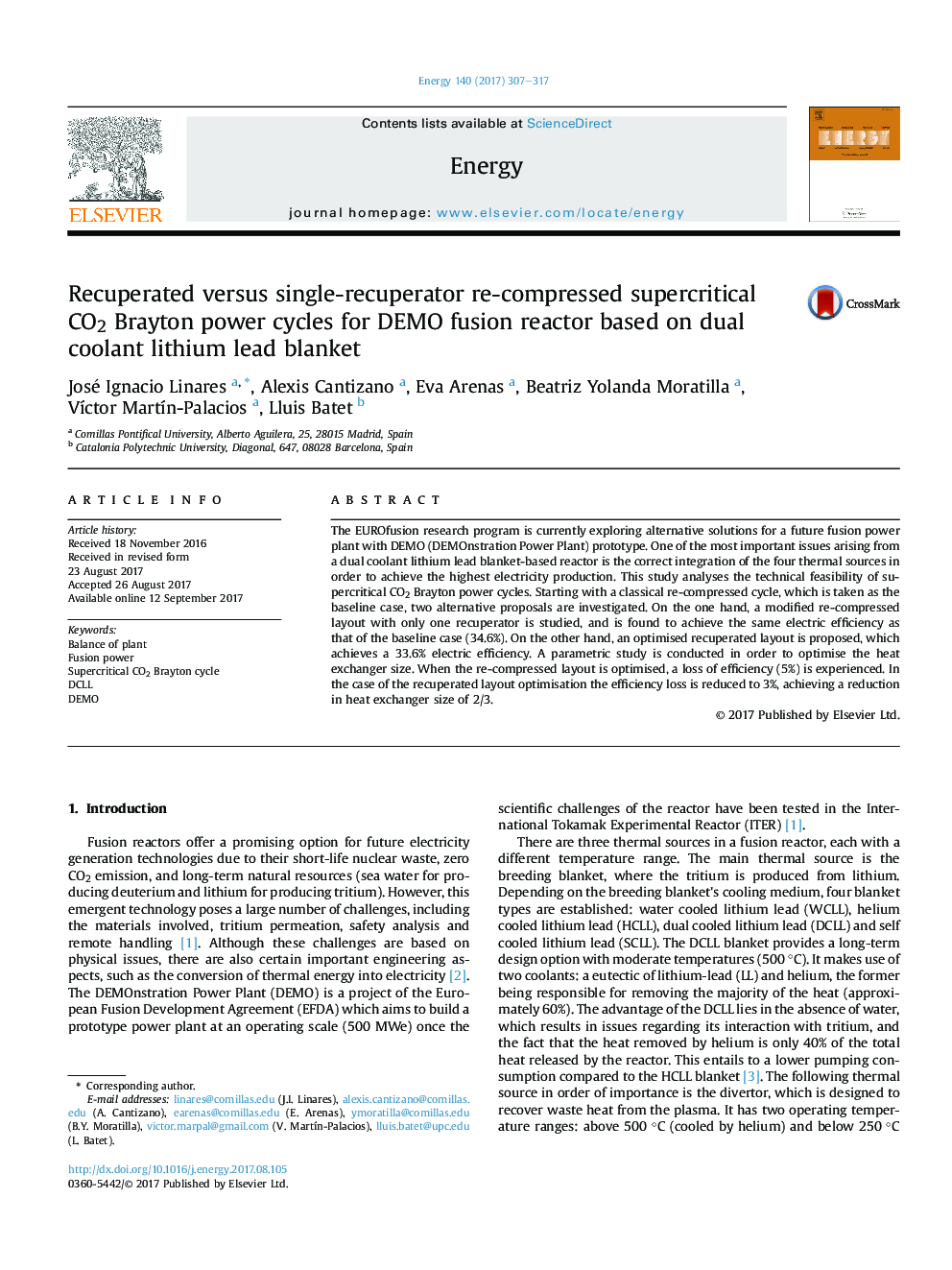| کد مقاله | کد نشریه | سال انتشار | مقاله انگلیسی | نسخه تمام متن |
|---|---|---|---|---|
| 5475411 | 1521411 | 2017 | 11 صفحه PDF | دانلود رایگان |

- Feasibility of Supercritical CO2 power cycles for fusion reactor has been analysed.
- Alternative layouts to the classical re-compressed one have been proposed.
- Heat exchangers size optimisation has been performed.
- Size optimisation in re-compressed layout produces a loss in efficiency of 5%.
- A simpler recuperated layout achieves a good trade-off between size and efficiency.
The EUROfusion research program is currently exploring alternative solutions for a future fusion power plant with DEMO (DEMOnstration Power Plant) prototype. One of the most important issues arising from a dual coolant lithium lead blanket-based reactor is the correct integration of the four thermal sources in order to achieve the highest electricity production. This study analyses the technical feasibility of supercritical CO2 Brayton power cycles. Starting with a classical re-compressed cycle, which is taken as the baseline case, two alternative proposals are investigated. On the one hand, a modified re-compressed layout with only one recuperator is studied, and is found to achieve the same electric efficiency as that of the baseline case (34.6%). On the other hand, an optimised recuperated layout is proposed, which achieves a 33.6% electric efficiency. A parametric study is conducted in order to optimise the heat exchanger size. When the re-compressed layout is optimised, a loss of efficiency (5%) is experienced. In the case of the recuperated layout optimisation the efficiency loss is reduced to 3%, achieving a reduction in heat exchanger size of 2/3.
Journal: Energy - Volume 140, Part 1, 1 December 2017, Pages 307-317